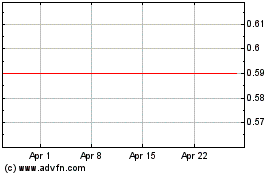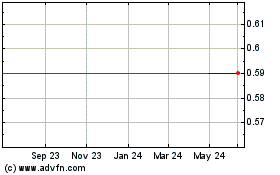Mutual Fund Summary Prospectus (497k)
March 28 2014 - 4:57PM
Edgar (US Regulatory)

Putnam
Emerging Markets Income Fund
Before
you invest, you may wish to review the fund’s prospectus, which contains more information about the fund and its risks. You
may obtain the prospectus and other information about the fund, including the statement of additional information (SAI) and most
recent reports to shareholders, at no cost by visiting putnam.com/funddocuments, calling 1-800-225-1581, or e-mailing Putnam at
funddocuments@putnam.com.
The
fund’s prospectus and SAI, both dated 3/30/14, are incorporated by reference into this summary prospectus.
Goal
Putnam
Emerging Markets Income Fund seeks high current income. Capital growth is a secondary goal when consistent with achieving high
current income.
Fees
and expenses
The
following table describes the fees and expenses you may pay if you buy and hold shares of the fund. You may qualify for sales charge
discounts if you and your family invest, or agree to invest in the future, at least $100,000 in class A shares or $50,000 in class
M shares of Putnam funds. More information about these and other discounts is available from your financial advisor and in
How
do I buy fund shares?
beginning on page 15 of the fund’s prospectus and in
How to buy shares
beginning on page
II-1 of the fund’s statement of additional information (SAI).
Shareholder
fees
(fees paid directly from your investment)
|
Share class
|
Maximum sales charge (load) imposed on purchases (as a percentage of offering price)
|
Maximum deferred sales charge (load) (as a percentage of original purchase price or redemption proceeds, whichever is lower)
|
|
Class A
|
4.00%
|
1.00%*
|
|
Class B
|
NONE
|
5.00%**
|
|
Class C
|
NONE
|
1.00%***
|
|
Class M
|
3.25%
|
0.40%*
|
|
Class Y
|
NONE
|
NONE
|
2
Annual
fund operating expenses
(expenses you pay each year as a percentage of the value
of your investment)
|
Share class
|
Management fees
|
Distribution and service (12b-1) fees
|
Other
expenses
=
|
Total
annual fund operating
expenses
|
Expense reimbursement
#
|
Total
annual fund operating expenses after expense reimbursement
|
|
Class A
|
0.73%
|
0.25%
|
1.54%
|
2.52%
|
(1.27)%
|
1.25%
|
|
Class B
|
0.73%
|
1.00%
|
1.54%
|
3.27%
|
(1.27)%
|
2.00%
|
|
Class C
|
0.73%
|
1.00%
|
1.54%
|
3.27%
|
(1.27)%
|
2.00%
|
|
Class M
|
0.73%
|
0.50%
|
1.54%
|
2.77%
|
(1.27)%
|
1.50%
|
|
Class Y
|
0.73%
|
N/A
|
1.54%
|
2.27%
|
(1.27)%
|
1.00%
|
* Applies
only to certain redemptions of shares bought with no initial sales charge.
** This
charge is phased out over six years.
*** This
charge is eliminated after one year.
= Other
expenses shown have been annualized.
# Reflects
Putnam Investment Management, LLC’s contractual obligation to limit certain fund expenses through March 30, 2015. This obligation
may be modified or discontinued only with approval of the Board of Trustees.
Example
The
following hypothetical example is intended to help you compare the cost of investing in the fund with the cost of investing in
other funds. It assumes that you invest $10,000 in the fund for the time periods indicated and then, except as indicated, redeem
all your shares at the end of those periods. It assumes a 5% return on your investment each year and that the fund’s operating
expenses remain the same. Only the first year of each period in the example takes into account the expense reimbursement described
above. Your actual costs may be higher or lower.
|
Share class
|
1 year
|
3 years
|
5 years
|
10 years
|
|
Class A
|
$522
|
$1,037
|
$1,577
|
$3,050
|
|
Class B
|
$703
|
$1,188
|
$1,798
|
$3,308
|
|
Class B (no redemption)
|
$203
|
$888
|
$1,598
|
$3,308
|
|
Class C
|
$303
|
$888
|
$1,598
|
$3,481
|
|
Class C (no redemption)
|
$203
|
$888
|
$1,598
|
$3,481
|
|
Class M
|
$473
|
$1,040
|
$1,633
|
$3,234
|
|
Class Y
|
$102
|
$587
|
$1,099
|
$2,507
|
Portfolio
turnover
The
fund pays transaction-related costs, such as commissions, when it buys and sells securities (or “turns over” its portfolio).
A higher turnover rate may indicate higher transaction costs and may result in higher taxes when
3
the
fund’s shares are held in a taxable account. These costs, which are not reflected in annual fund operating expenses or the
above example, affect fund performance. The fund’s turnover rate for the period March 27, 2013 (commencement of operations)
through November 30, 2013 was 5%.
Investments,
risks, and performance
Investments
For
this “non-diversified” fund, we invest mainly in bonds that are obligations of emerging market companies and governments.
We may invest in bonds denominated in U.S. dollars and bonds that are denominated in foreign currencies. Emerging markets include
countries in the JPMorgan Emerging Markets Bond Index Global Diversified or that we consider to be equivalent to those countries
based on our evaluation of their level of economic development or the size and experience of their securities markets. We may invest
both in investment-grade and below-investment-grade investments. We may consider, among other factors, credit, interest rate and
prepayment risks, as well as general market conditions, when deciding whether to buy or sell investments. We may also consider
the fundamental characteristics of the particular countries in which we invest as well as our views on the currencies of those
countries when making investment decisions. We invest in currencies directly and through derivatives, for both hedging and non-hedging
purposes. We may also use derivatives, such as futures, options, warrants and swap contracts, for both hedging and non-hedging
purposes.
Risks
It
is important to understand that you can lose money by investing in the fund.
The
value of bonds in the fund’s portfolio may fall or fail to rise over extended periods of time for a variety of reasons, including
both general financial market conditions and factors related to a specific issuer or industry. The value of bond investments is
also affected by changing market perceptions of the risk of default. The risks associated with bond investments include interest
rate risk, which means the value of the fund’s investments is likely to fall if interest rates rise. Bond investments are
also subject to credit risk, which is the risk that the issuer of a bond may default on payment of interest or principal. Emerging
markets often do not provide legal remedies for bondholders comparable to those available to bondholders in the United States,
and it may not be possible to dispose of bonds of distressed issuers. Interest rate risk is generally greater for longer-term bonds,
and credit risk is generally
4
greater
for below-investment-grade bonds. The value of international investments traded in foreign currencies may be adversely impacted
by fluctuations in exchange rates. Currency investments, whether for hedging or non-hedging purposes, may also be adversely impacted
by exchange rate fluctuations. Emerging markets may carry risks associated with potentially less stable economies or governments
(such as the risk of seizure by a foreign government, the imposition of currency or other restrictions, or high levels of inflation
or deflation), and may be or become illiquid.
The
fund’s “non-diversified” status, which means the fund may invest a greater percentage of its assets in fewer
issuers than a “diversified” fund, can increase the fund’s vulnerability to adverse developments affecting a
single industry, country or issuer, which may result in greater losses and volatility for the fund.
Our
use of derivatives may increase these risks by increasing investment exposure (which may be considered leverage) or, in the case
of many over-the-counter instruments, because of the potential inability to terminate or sell derivatives positions and the potential
failure of the other party to the instrument to meet its obligations.
The
fund may not achieve its goal, and it is not intended to be a complete investment program. An investment in the fund is not insured
or guaranteed by the Federal Deposit Insurance Corporation or any other government agency.
Performance
Performance
information will be available after the fund completes a full calendar year of operation.
5
Your
fund’s management
Investment
advisor
Putnam
Investment Management, LLC
Portfolio
managers
Paul
Scanlon, Co-Head of Fixed Income, portfolio manager of the fund since 2013
Michael
Atkin, Portfolio Manager, portfolio manager of the fund since 2013
Kevin
Murphy, Portfolio Manager, portfolio manager of the fund since 2013
Purchase
and sale of fund shares
You
can open an account, purchase and/or sell fund shares, or exchange them for shares of another Putnam fund by contacting your financial
advisor or by calling Putnam Investor Services at 1-800-225-1581.
When
opening an account, you must complete and mail a Putnam account application, along with a check made payable to the fund, to: Putnam
Investor Services, P.O. Box 8383, Boston, MA 02266-8383. The minimum initial investment of $500 is currently waived, although Putnam
reserves the right to reject initial investments under $500 at its discretion. There is no minimum for subsequent investments.
You
can sell your shares back to the fund or exchange them for shares of another Putnam fund any day the New York Stock Exchange (NYSE)
is open. Shares may be sold or exchanged by mail, by phone, or online at putnam.com. Some restrictions may apply.
6
Tax
information
The
fund’s distributions will be taxed as ordinary income or capital gains unless you hold the shares through a tax-advantaged
arrangement, in which case you will generally be taxed only upon withdrawal of monies from the arrangement.
Financial
intermediary compensation
If
you purchase the fund through a broker/dealer or other financial intermediary (such as a bank or financial advisor), the fund and
its related companies may pay that intermediary for the sale of fund shares and related services. Please bear in mind that these
payments may create a conflict of interest by influencing the broker/dealer or other intermediary to recommend the fund over another
investment. Ask your advisor or visit your advisor’s website for more information.
Additional
information, including current performance, is available at putnam.com/funddocuments, by calling 1-800-225-1581, or by e-mailing
Putnam at funddocuments@putnam.com.
7

Deep Down (QB) (USOTC:DPDW)
Historical Stock Chart
From Aug 2024 to Sep 2024

Deep Down (QB) (USOTC:DPDW)
Historical Stock Chart
From Sep 2023 to Sep 2024
